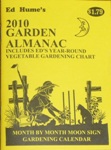
Feng Shui and gardening go hand in hand. Those who practice Feng Shui can learn most of the core concepts simply through the study of nature and its patterns. Some examples of these patterns include the seasons, movements of the planets, source and course of water, and phases of the moon. Through understanding the patterns of nature you can begin to see the complex interrelationships which to the uneducated observer can appear to be magical manifestations of an unknown catalyst. One gardener may perform the same actions as another and yet they do not achieve the same results – only one has what we call a “green thumb”. Why?
The more we can perceive the patterns and identify the relationships, the more we can influence the outcome of our endeavors. Suddenly everything is easier because we understand how to act at the proper time, and to understand when we are trying to work against the resistance of nature. The objective is the same for gardeners and Feng Shui practitioners: to observe and understand the patterns of nature and act in a way that maximizes our achievements rather than our endeavors.
The phases of the moon have a physical and measurable effect on the earth. One of the most obvious manifestations of the influence of the moon would be the tides. The gravitational pull of the moon is the strongest at the new moon and the full moon, which is when we see the highest tides. The moon has the same effect on the moisture in the ground and water that is under the ground. During the new moon, moisture is pulled up into the soil which causes seeds to swell and sprout more vigorously. The second quarter of the moon is generally a good time to plant since this phase will support vigorous leaf growth. During the full moon the moisture content in the ground is the highest and the seeds will absorb it the most. The third quarter (after the full moon) is a good time for root growth, and planting those root vegetables as the moon wanes and the moisture can sink back down. In the fourth quarter the gravitational pull is much less which means less vigorous growth. The fourth phase is the right time to mow your lawn, or pull weeds. If you do these chores in the fourth phase you will not have to repeat them as often.
Can you still have a lovely, productive, lush and blooming garden if you don’t let the phases of the moon guide your tasks? Sure, but if you want to be known for having a green thumb you should really try this method. And who wouldn’t want to do less weeding! My favorite guide for keeping track of all this stuff is Ed Hume’s Gardening Almanac. It is a short, straightforward list of tasks and the optimal dates for performing them. All that for only $1.79!
